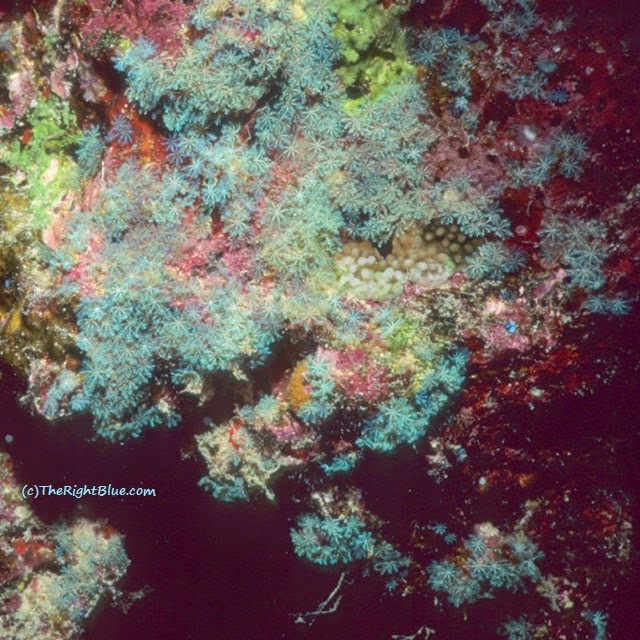BNSullivan.jpg) |
| Eyes and proboscis of a Queen Conch (Strombus gigas) |
Conch shells, like all seashells, are created by secretions from the mantle of the snail that lives inside. This happens gradually, over the snail's lifetime. Most people have seen empty Conch shells, yet few have seen the snails that are the natural inhabitants of those large, heavy shells. Fewer still realize that those critters have wonderful stalked eyes.
All of the snails in the family Strombidae, to which Conchs belong, have these stalked eyes. If you come across a live Conch shell while diving, you can see the snail's eyes for yourself if you are patient. If you pick up the shell and turn it over, the animal inside will retract into the shell almost immediately. Set the shell down with the glossy aperture exposed and just wait. Eventually -- say, in five or ten minutes -- the snail will extend its eyes to look around. If you are lucky, you also may get to see its proboscis (tubular mouth), as in the photo above.
The snail in an upended Conch shell has the ability to right itself, but to do so takes quite a bit of effort on the part of the critter. So, if you do handle one or set it aperture side up to try and catch a glimpse of the eyes, please do return it to its natural aperture-down position before you leave it. The photo below shows the snail's eye peeking out of the shell as it moves along the sand in its normal position.
The creature in the photos on this page is a Queen Conch (Strombus gigas), a species common to the Caribbean. I photographed this one during a night dive off the north coast of Cayman Brac.
BNSullivan.jpg) |
| An eye peeks out as a Queen Conch snail crawls along the sand |

BNSullivan.jpg)
BNSullivan.jpg)
BNSullivan.jpg)

BNSullivan.jpg)
BNSullivan.jpg)
BNSullivan.jpg)
BNSullivan.jpg)
BNSullivan.jpg)



